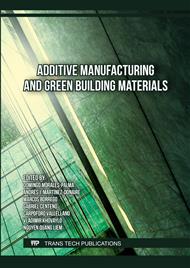p.143
p.153
p.161
p.171
p.179
p.189
p.195
p.205
p.213
Tensile Behaviour of PLA Parts Manufactured by FFF with Defects in the Interlayer Filament Bonding and its Application in Product Design
Abstract:
Additive Manufacturing (AM) has been one of the technologies that has been booming in recent years. Its main advantages are the versatility in the manufacture of parts, the ability to print limited series and its low acquisition cost, among others. Among these technologies, one of the most widely used by engineering and product design teams is Fused Filament Fabrication (FFF). PLA being one of the materials most employed for FFF. Likewise, for a proper shaping of this material and process, it is necessary to establish several parameters to define the quality and properties of the designed part. In this context, a comparison of two groups of pieces has been carried out. Whereas the first group exhibits a correct process parameters and an adequate calibration of the printing bed; the second, has not any bonding between layers or bonding of beads of the same layer, due to an incorrect establishment of the initial parameters. In order to compare these groups, a study of the internal structure was carried out by X-Ray CT along with a characterization of their tensile mechanical properties. Results show a similar maximum stress for both groups, but a drastic reduction of the plastic area in the parts with defects. The quantification and comparison of the mechanical properties of both tests might provide a rejection criterion for parts that work in tension and present defects similar to those studied for engineering teams in product design.
Info:
Periodical:
Pages:
179-188
Citation:
Online since:
September 2023
Price:
Сopyright:
© 2023 Trans Tech Publications Ltd. All Rights Reserved
Share:
Citation:



